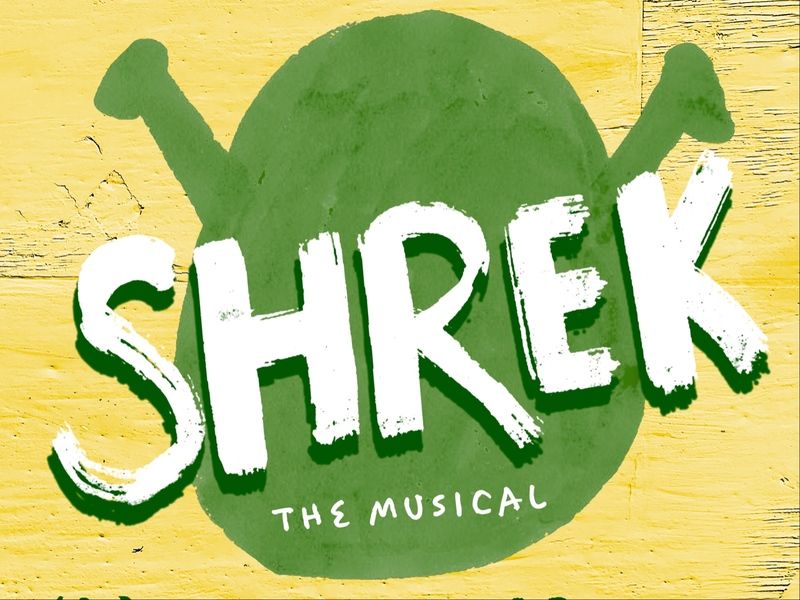Part police procedural, part science fiction, part exploration of the dark places to which virtual reality could lead, playwright Jennifer Haley’s prize-winning play, “The Nether,” seems to grow ever-more relevant since its 2013 stage debut.
This powerful drama – I’d call it futuristic, but in some ways the future it inhabits is now – is being staged by Renaissance Theaterworks (RTW), Jan. 10-Feb. 2, at the theater at 255 S. Water St., in Walker’s Point.
The work – directed at RTW by Elyse Edelman – is, notes RTW’s synopsis, “a tense, thought-provoking play set in a near-future world where immersive virtual realities blur the line between right and wrong.
“When a detective investigates a disturbing online realm, she uncovers a dark network that raises unsettling questions about technology, morality and the human psyche. A chilling exploration of digital desires and their real-world consequences.”
In this non-date-specific future, the internet has morphed into The Nether, a name for a network of virtual reality worlds where users can take on any identity, explore any realm, feed any desire.
The Hideaway realm is one where child abuse and murder is the name of the game and a real-life police detective hauls in the creator of this dreadful world for interrogation.
There are deeper links at play, however, and because I don’t want to spoil anything, I will leave it at that for now.
Having read the script – which explores issues of technology and imagination and ethics – but not seen “The Nether” onstage, I found the subject matter disturbing. But, says RTW Artistic Director Suzan Fete, the work is meant to be experienced with actors in a theater, rather than read, as I did, alone on an airplane.
“(It) is quite dark,” Fete says. “It is also one of the most brilliant and complex plays I have ever read. Yes, I thought hard about producing a play that discusses suicide, sexual violence and child abuse. (But) the thing about ‘The Nether’ is that it reads much worse than it plays.
“I’ve seen two productions and one staged reading and the overall feeling from each performance was ‘Wow, that was fascinating!’ not ‘I need a shower’.”
It bears saying here that there is absolutely NO sexual contact, no nudity, no specific descriptions of sexual abuse in the script nor on the stage in this production. Haley is adept at saying it all while saying nothing, as it were.
“The playwright does an excellent job of establishing the rules of the virtual realm right on page one of the script, making it clear that only adults can be the ‘behinders’ – the individuals behind the characters,” director Edelman says.
“This framework is what allows the play to wrestle with the complex questions it raises. And honestly, RTW audiences are no strangers to tackling challenging or uncomfortable subject matter.”
That Haley has been successful in this delicate balancing act is perhaps evidenced by the fact that “The Nether” has won the Susan Smith Blackburn Award, Francesca Primus Prize and seven Ovation Awards, as well as four Olivier nominations.
“It has been wildly successful in multiple national and international productions,” Fete notes.
When I wonder aloud whether or not Haley could’ve used less painful subjects than pedophilia and suicide – even though neither is depicted, only implied – Edelman says, “I think you’ll find that in seeing the production, there is as much beauty as there is ugliness in the presentation, which I also think is directly from the text.
“The play delves into the ethics of gameplay and explores how we prosecute and regulate imagination. Perhaps, in order to talk about regulating imagination, we first need to examine what we are certain is the most wrong thing in the world? Only then can we begin to discuss what’s wrong in imagination and where those boundaries blur?”
To let audiences know that “The Nether” explores the darkest corners of the imagination, RTW has included content warnings and age recommendations (16 and older) for its production.
The staging itself lets audiences know that RTW is not, as Edelman pointed out earlier, afraid to tackle tough subjects, to explore the breadth and depth of the human experience in its array of productions.
“Let me talk about Suzan and her guts in producing this play, as well as her proven track record over the past 30 years of choosing material that some might consider ‘scary’ to take on,” says Edelman, who has acted in three productions at RTW and directed two, including this one. “She takes huge risks.
“Every time, whether I’m in and out of a bathtub full of water, taking three showers in a wedding dress onstage, navigating dense scientific language as a PhD evolutionary biology major, or trying to stage a soccer field with elite players from text that reads like an orchestral score ... Each time I’ve worked at RTW on a play Suzan has offered me, it’s been the hardest thing I’ve ever done. So, I’d like to focus on her bravery in bringing these shows to RTW and to Milwaukee in the first place!”
Edelman, however, stares down some challenges of her own in bringing “The Nether” to the stage here in Milwaukee.
The script moves between a virtual world and real life, it leaps boundaries of time and space and there are some complex character relationships to navigate, too.
“Staging this play presents a number of exciting possibilities, primarily due to its non-linear structure and the way it moves across different times and locations,” she says. “The story unfolds in two distinct places: In-World, what we know as the ‘real world,’ which takes place entirely in an interrogation room, and The Hideaway, a realm set in Victorian-era America within The Nether, or what we know as the internet.
“The contrast between these two spaces opens up many creative avenues. Without giving too much away, Doug Dion, our brilliant scenic designer, and I were particularly drawn to the idea that virtual realms in the play are described as feeling just as ‘real’ to the people inside them as the physical world they inhabit. All sensations can be experienced and felt in The Hideaway, and this concept has greatly influenced our staging.
“Imagination and the way our brains naturally fill in gaps run as major throughlines in the play, too, and have shaped our approach."
Edelman also credits the production's onstage talent.
"Our cast is full of extraordinary talent," she says, "a mix of actors I know well and have worked with before, and others who are new to me, but all of whom I’ve long admired for their artistry: Laura Gray, Steve Koehler, Michael Wright, Dimonte Henning, Zoah Hirano, and Josie Van Slyke.”
Considering the bleak picture that Haley’s work paints of the dark side of virtual reality and artificial intelligence, I ask Fete and Edelman for their thoughts on the technologies and their possibilities today.
“As a director, I was drawn to this story because it reflects how quickly our modern technological landscape is evolving, especially with A.I. advancing faster than we can regulate it or fully understand its implications,” says Edelman.
“Just in the past few months, we’ve seen A.I. make rapid progress, from generative tools creating sophisticated art to systems now diagnosing medical conditions and even predicting fashion trends. These advancements are happening so quickly that it’s difficult to keep up. Technology is reshaping human connection in ways we’ve never seen before.”
Some of those ways, she says, are positive.
“In my research, I found some of the most meaningful insights came from exploring virtual platforms like V.R. Chat myself, as well as documentaries that follow people who socialize and work in virtual spaces,” Edelman notes. “I was struck by how people form real, meaningful connections in these digital realms – connections they might not be able to form offline. For example, during the pandemic, long-distance couples used virtual spaces to sit together, hold hands and even kiss when travel restrictions kept them apart.
“Virtual dance classes allowed people to express themselves through avatars, giving them the freedom to explore movement in ways they might not have been able to in person, whether due to physical differences or social discomfort. Virtual family hangouts bridged communication gaps between hearing and non-hearing communities, creating new forms of inclusion.
“As A.I. and V.R. continue to evolve, these technologies are pushing the boundaries of human experience, challenging us to rethink how we connect and what it means to be present. This is why the story feels so urgent – it asks us to confront where our connections are headed, how they might evolve, and what we stand to lose or gain in the process.”
Fete says she’s long been interested in staging “The Nether,” which she first read in 2013, the year it made its stage debut.
“I waited for just the right season and the right director to bring this brilliant and challenging work to life,” she says. “I’m so glad I waited. A.I. has come of age in 2024. Every day the media cites daily breakthroughs in new A.I. achievements; cancer research, robotics learning and the advent of realistic video creation.
“A.I. is on everyone’s mind in a way it wasn’t 12 years ago.”
For showtimes, cast information, tickets and more, visit rtwmke.org/shows/the-nether.
Born in Brooklyn, N.Y., where he lived until he was 17, Bobby received his BA-Mass Communications from UWM in 1989 and has lived in Walker's Point, Bay View, Enderis Park, South Milwaukee and on the East Side.
He has published three non-fiction books in Italy – including one about an event in Milwaukee history, which was published in the U.S. in autumn 2010. Four more books, all about Milwaukee, have been published by The History Press.
With his most recent band, The Yell Leaders, Bobby released four LPs and had a songs featured in episodes of TV's "Party of Five" and "Dawson's Creek," and films in Japan, South America and the U.S. The Yell Leaders were named the best unsigned band in their region by VH-1 as part of its Rock Across America 1998 Tour. Most recently, the band contributed tracks to a UK vinyl/CD tribute to the Redskins and collaborated on a track with Italian novelist Enrico Remmert.
He's produced three installments of the "OMCD" series of local music compilations for OnMilwaukee.com and in 2007 produced a CD of Italian music and poetry.
In 2005, he was awarded the City of Asti's (Italy) Journalism Prize for his work focusing on that area. He has also won awards from the Milwaukee Press Club.
He has be heard on 88Nine Radio Milwaukee talking about his "Urban Spelunking" series of stories, in that station's most popular podcast.







